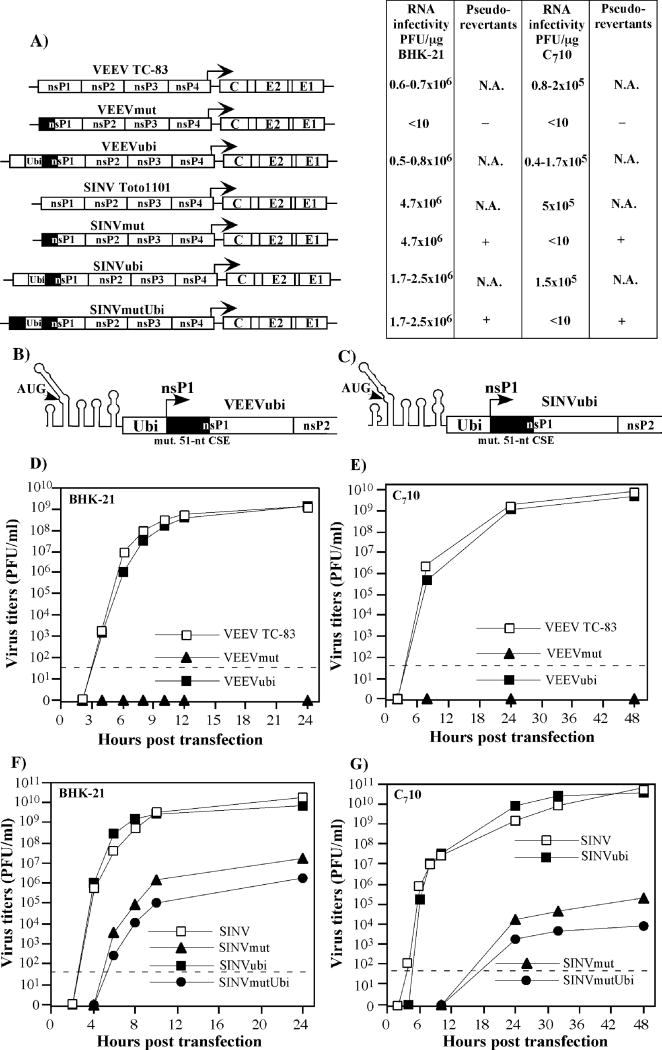FIG. 1.
Replication of VEEV and SINV viruses with modified 5′ ends of the genome in BHK-21 and C710 cells. (A) Schematic representation of VEEV and SINV genomes with modified 5′ ends, and infectivities of the in vitro-synthesized viral RNAs in the infectious center assay. Solid boxes indicate the nsP1 sequence containing clustered silent mutations. Arrows indicate position of the subgenomic promoter. N.A. indicates “not applicable,” because of the wt phenotype of the designed mutants. (B and C) Schematic representation of the 5′ ends of VEEVubi and SINVubi genomes, respectively. Solid boxes indicate nsP1 sequence containing clustered silent mutations. Arrows indicate positions of the initiating AUG in the computer-predicted secondary structure and starting AUG of the nsP1–4 polyprotein. (D and E, F and G) Single-step viral growth curves after electroporation of 3 μg of in vitro-synthesized RNAs into BHK-21 or C710 cells. At the indicated times, the medium was replaced, and virus titers were determined in BHK-21 cells, as described in Materials and Methods. The dashed lines indicate the limit of detection.

